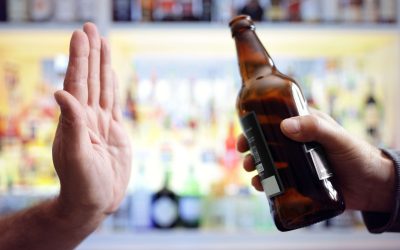
Relationship Between Anxiety and Addiction to Substance Use
The start of the psychopharmacological treatment in patients with comorbid AnxD and AUD requires a detailed clinical evaluation of the benefits/risks profile. The pharmacological interactions should be taken into account when choosing the psychotropics. Much care should also be taken with the SSRIs, as some symptoms of abstinence from alcohol can become superimposed or even added to the serotoninergic activation. For this reason, it is necessary for the clinic to pay careful attention to the interactions and to the precise identification of the symptoms so as to be able to control the effects and risks resulting from the medication itself (98, 99). Trembling, or tremors, occur in 30-50% of individuals with alcohol-induced anxiety disorder. Tremors are involuntary muscle movements, often affecting the hands but can also occur in other parts of the body.
Description of Alcohol-Induced Anxiety Disorder
- However, SSRIs should be used with caution when patients are actively drinking because they may increase alcohol consumption (78, 79).
- Similar to the other modalities described here, administration of these psychosocial treatment strategies for alcohol problems can be less straightforward with individuals who have comorbid anxiety and AUDs.
- The shared neurobiology view also implies that the transition from nonproblematic alcohol use to AUD (roughly corresponding to the withdrawal/negative affect stage of addiction in the opponent process model)41 should require less overall alcohol exposure for people with anxiety and depressive disorders.
- Unfortunately very few studies have been done to validate the need for an integrated approach.
- This can definitely cause anxiety and worsen any existing phobias or overthinking tendencies you may already have.
Techniques such as mindfulness exercises and meditation can help manage mental health and anxiety disorders. Journaling and taking time to self-reflect are all proven techniques that can positively impact addicts. He reported attending religion-based premarital counseling, but he had never sought treatment for his social anxiety. At one point, he used self-help tapes aimed at decreasing social anxiety, but he did not find them particularly helpful. He stated that the medication improved his mood somewhat, but he discontinued use because of unpleasant side effects.
Healthy Habits
Study results offer an expansion of the extant literature examining social anxiety and drinking behaviors by providing support for a trait-by-context interaction in shaping alcohol consumption. Such results, however, raise questions when compared against equivocal findings regarding trait-level assessments of social anxiety and alcohol consumption (Morris et al., 2005). The present study leverages novel ambulatory technology to explore interactions between person and place in predicting drinking, aiming to elucidate the relationship between social anxiety and alcohol consumption through a consideration of context. Participants completed measures of social anxiety during an initial baseline laboratory visit, then engaged in one week does alcohol give you anxiety of ambulatory assessment during which they wore a transdermal alcohol sensor and completed experience-sampling measures of social context involving direct image-capture techniques.
Comorbid AnxD and AUD Pharmacological Treatment Considerations

These medications are safe, are not addictive, and do not interact with alcohol in the brain. In addition, accumulating evidence suggests that SSRIs also have some efficacy in improving outcome in treatment-seeking alcoholics with a late onset of alcoholism (i.e., after age 25) (Pettinati et al. 2000), which includes most socially anxious alcoholics. Much of what is known about the association between social anxiety and alcohol consumption comes from research with college students who did not have clinical diagnoses of social anxiety disorder, rather than from research with patients diagnosed as having the disorder. The study found that among those respondents who believed that alcohol would definitely reduce social fears, the level of social anxiety did not affect the level of alcohol consumption. Thus, although the investigators had expected the high-anxiety group to consume more alcohol than the low-anxiety group when alcohol was being used to cope with social fears, no such difference existed, at least in these non-treatment-seeking college students. This lack of a difference might, however, be, in part, the result of the social context of college student drinking.
Understanding Generalized Anxiety Disorder: DSM-5 Codes and Diagnostic Criteria
Two of the three trials reporting superiority of medication compared with placebo on anxiety symptom outcomes were industry funded. Finally, the etiology, course, and treatment of both AUD and depression differ substantially by gender. Women have been underrepresented in much of the research on co-occurring AUD and depressive disorders, particularly in the early research on this topic. The research needs more representation of women to increase understanding of the sex differences and to better characterize the mechanisms underlying women’s heightened vulnerability for depressive disorders. These populations experience disparities in access to care for AUD and depressive disorders but are underrepresented in studies of these disorders.
- On the SASCI, he continued to score a 6, indicating the patient believed that both his social anxiety and his anxiety-related avoidance had decreased since beginning treatment.
- We obtained published and unpublished trials from key researchers, as identified by the frequency with which they were cited in the bibliographies of RCTs and open‐label studies.
- In AUD treatment, naltrexone injections did not provide any significant benefit in relapse, nor did it lower the numbers of binge drinks.
Anxiety and Substance Use Disorders: A Review

It is therefore recommended that in reviewing the anticipated course of treatment with comorbid patients, clinicians indicate that the presence of a comorbid disorder may increase the duration of treatment (e.g., 20 to 25 sessions) so that patients have an accurate expectation of the course of their treatment. The patient’s response to the interview was supported by the data collected on the self-report measures. His Drug rehabilitation BFNE score was 26, down from 60 at intake and 32 at termination (see Figure 1).
- Moreover, serotonergic agents have favorable properties, such as being well-tolerated and having virtually no abuse potential.
- The SASCI is a four-item self-report measure designed to provide session-by-session assessment of treatment progress in the treatment of social anxiety.
- It is typically taken once or twice daily, with dosage adjustments based on the patient’s response.
- Sleep disturbances are more common during withdrawal and can persist for weeks or months after stopping alcohol consumption.
- Neuroscientific research implicates overlapping neurobiological systems and psychological processes in promoting the rise of negative affect and alcohol misuse.
The present case study outlines the successful use of combined MET-CBT to treat a 33-year-old man with a long history of generalized SAD with AUD. Following 19 sessions of MET-CBT, https://ecosoberhouse.com/ the patient was considered in remission for both disorders, with notable decreases in social anxiety and alcohol-related problems (with continued gains at 6-month follow-up). Although these data are preliminary, they indicate that the combination of MET and CBT may be a viable approach to the treatment for patients with SAD and comorbid AUD. Fortunately, several important ongoing studies will help answer some remaining questions regarding the treatment of coexisting depressive or anxiety disorders in the context of alcoholism. The COGA investigation will gather more data regarding potential alcoholic subtypes and will continue to explore possible genetic linkages between alcohol dependence and major depressive and major anxiety disorders.
Data synthesis
Several clinical trials have examined the effect of supplementing standard AUD treatment with a validated treatment for anxiety or mood disorders among individuals with both conditions. We were unable to retrieve sufficient data to address the majority of the outcomes of interest in this review, despite a comprehensive search of the literature. Alcoholics frequently experience episodes of intense depression and/or severe anxiety. Depressed or anxious alcohol-dependent people often believe that they drink to relieve symptoms of sadness or nervousness. However, research does not unanimously support the prior existence of severe depressive or anxiety disorders as a usual cause of alcoholism. Psychological symptoms may carry a worse prognosis for alcohol-related problems, and these symptoms must be addressed early in alcoholism treatment.


